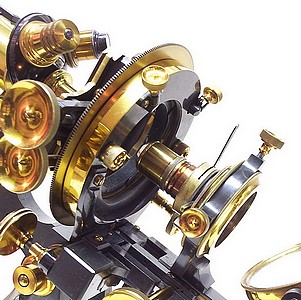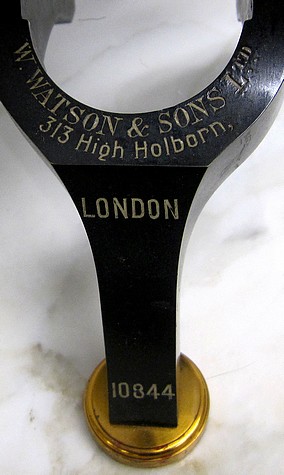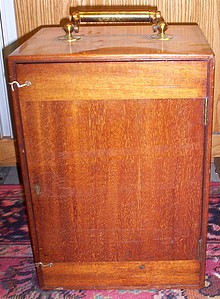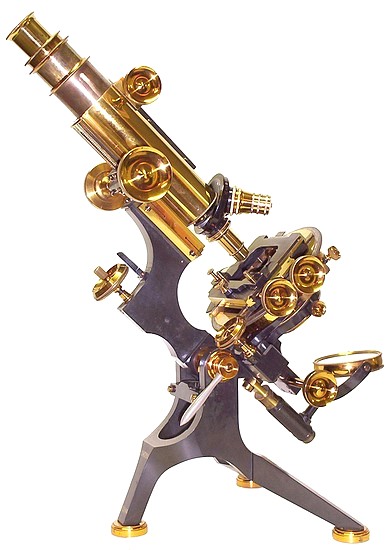
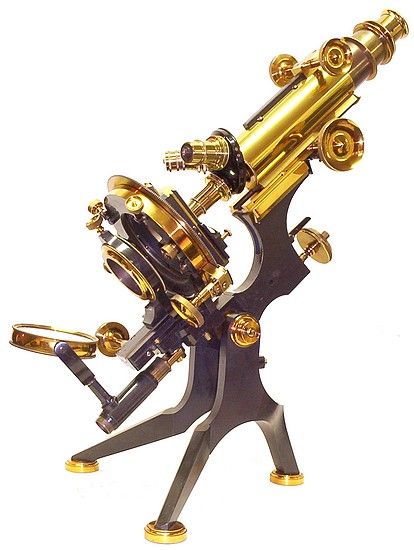
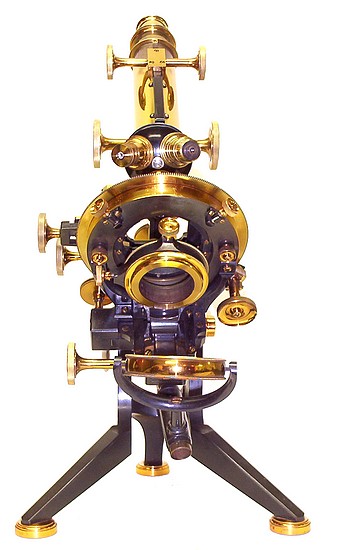
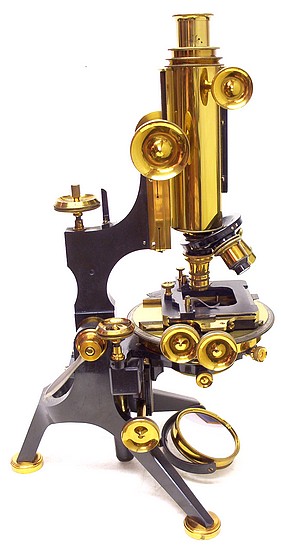
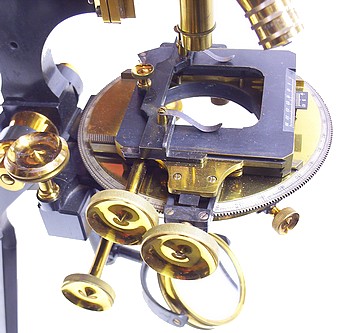
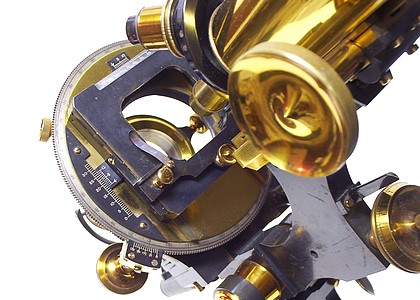
The Watson firm first manufactured this type of microscope in 1891 at the suggestion of the renowned Belgian microscopist Henri van Heurck (1838-1909). When first introduced, the microscope incorporated a continental (horseshoe) style base, but, as with the present example, stands with an English tripod base were also produced and became the standard form.The microscope is constructed in brass with bright lacquered and oxidized surface finishes and is about 16 inches tall when set up for use with the draw tubes partially extended as shown in some of the photos. The main focus is by rack and pinion and the fine focus is by calibrated micrometer screw (1 rev, 1/13 mm). There are two drawtubes with the main drawtube calibrated and having movement by rack and pinion. The substage is focused by rack and pinion, has a fine focus by micrometer screw located at the side of the stage, and has centering adjustments.
The following was taken from the 1923 Watson & Sons catalog:
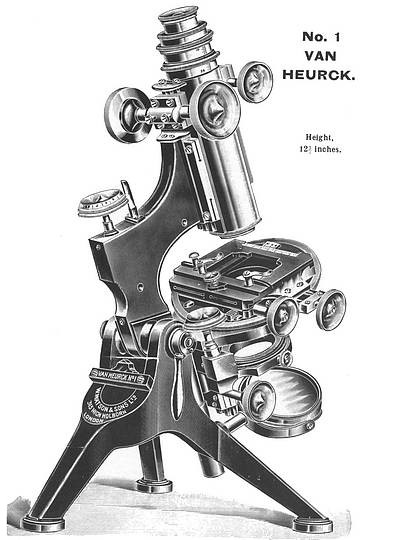
The Van Heurck is the most completely-fitted model which we make, and represents all that is most modern in microscope design and manufacture.
The aim in its construction has been to present, in the most efficient form possible, mechanical movements of complete and comprehensive description, in a design of maximum rigidity, and to maintain every feature in the most up-to-date manner, and we can assert unhesitatingly that the complete control which is afforded in working enables the finest results to be secured with a rapidity and comfort which is unique. It lias brought the most gratifying testimony from many of the leading microscopists of the day, and this, coupled with the fact that the Van Heurck is now used by many of the foremost workers in every branch of research, is a sufficient guarantee of the perfection attained.
This Microscope was first made by us to tho specification and order of the late Dr. Henri Van Heurck, the celebrated Microscopist, of the Botanical Gardens» Antwerp, for conducting the researches for which he gained such distinction, an for his high-power Photographic work.
Photo-Micrography, especially with high powers of large aperture, demands a working excellence and accuracy of the highest grade in every part—it is, in fact, the severest test to which a microscope can be put. In the construction of this Instrument the usual causes of failure have been eliminated. It will at once be recognised that the precision which is requisite for high-power photography and which is provided in this Instrument, is of immense value to the ordinary visual worker, for it enables him to secure the fullest and most effective means of conducting his researches. Especially does this apply to Laboratory work, in which reliance has to be placed on the results obtained ; and to those who are doing original and accurate work, this microscope will be found to embody every convenience for rendering such work more easy and exact.
Read the full description of the Watson Van Heurck microscope in the 1923 catalog:
